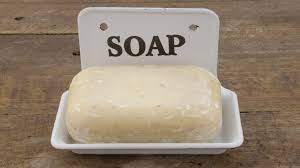The Origin of Soap: A Historical Journey

Soap, a fundamental element of hygiene and cleanliness, has a rich and fascinating history that dates back thousands of years. The origin of soap is intertwined with the development of human civilization, reflecting advancements in chemistry, culture, and daily life.
The earliest evidence of soap-like substances dates back to around 2800 BCE in ancient Babylon. Archaeologists discovered clay cylinders containing a soap-like material made from fats boiled with ashes, which likely served practical purposes such as cleaning wool and cotton for textile production. This early form of soap was a rudimentary mixture but marked the beginning of humanity’s exploration into cleansing agents.
“Beat the Pressure: A Comprehensive Guide to Lowering Blood Pressure Naturally.”
Buy book from Gumroad or Paystack
In ancient Egypt, soap was used not only for cleaning but also for medicinal purposes. Records from around 1500 BCE describe a soap-like substance made from animal and vegetable oils mixed with alkaline salts. Egyptians recognized the importance of cleanliness in both health and religious rituals, and soap played a significant role in their bathing practices.
The Romans further advanced soap-making techniques and popularized bathing culture through their elaborate public bathhouses. Roman soap recipes often included ingredients like tallow (animal fat), ashes, and sometimes scented oils to improve fragrance. The Latin word “sapo,” from which the English word “soap” derives, first appeared in Roman writings, highlighting the importance of soap in everyday life.
During the Middle Ages, soap-making became a craft practiced mainly by guilds in Europe, especially in regions like Italy, Spain, and France. The production of high-quality soap involved combining olive oil or other vegetable oils with alkaline substances derived from wood ash or soda ash. This period saw the emergence of soaps that were not only functional but also valued for their pleasant scents and skin benefits.
The Industrial Revolution brought significant changes to soap production, transforming it from a manual craft to a large-scale industry. The discovery of chemical processes to produce pure alkali (such as sodium hydroxide) enabled consistent and efficient soap manufacturing. This innovation made soap more affordable and accessible to the general public, contributing to improved public health and hygiene standards worldwide.
Today, soap remains an essential product, evolving with advances in chemistry and environmental awareness. Modern soaps come in various forms, including bar soaps, liquid soaps, and specialized formulations for different skin types and uses. Despite these changes, the fundamental principle remains the same: soap is a cleansing agent that removes dirt and oils through its unique chemical structure.
Understanding the origin of soap reveals not only the scientific ingenuity of past civilizations but also the cultural and social significance of cleanliness throughout human history. From ancient Babylonian clay cylinders to modern industrial production, soap has played a crucial role in shaping health, hygiene, and daily life across the ages.
💔 “She said she loved me. And for fifty-two years, I believed her.” 💔
Buy The Book "The Longest Lie: A Husband’s Journey Through Love, Betrayal, and Redemption" From Gumroad






